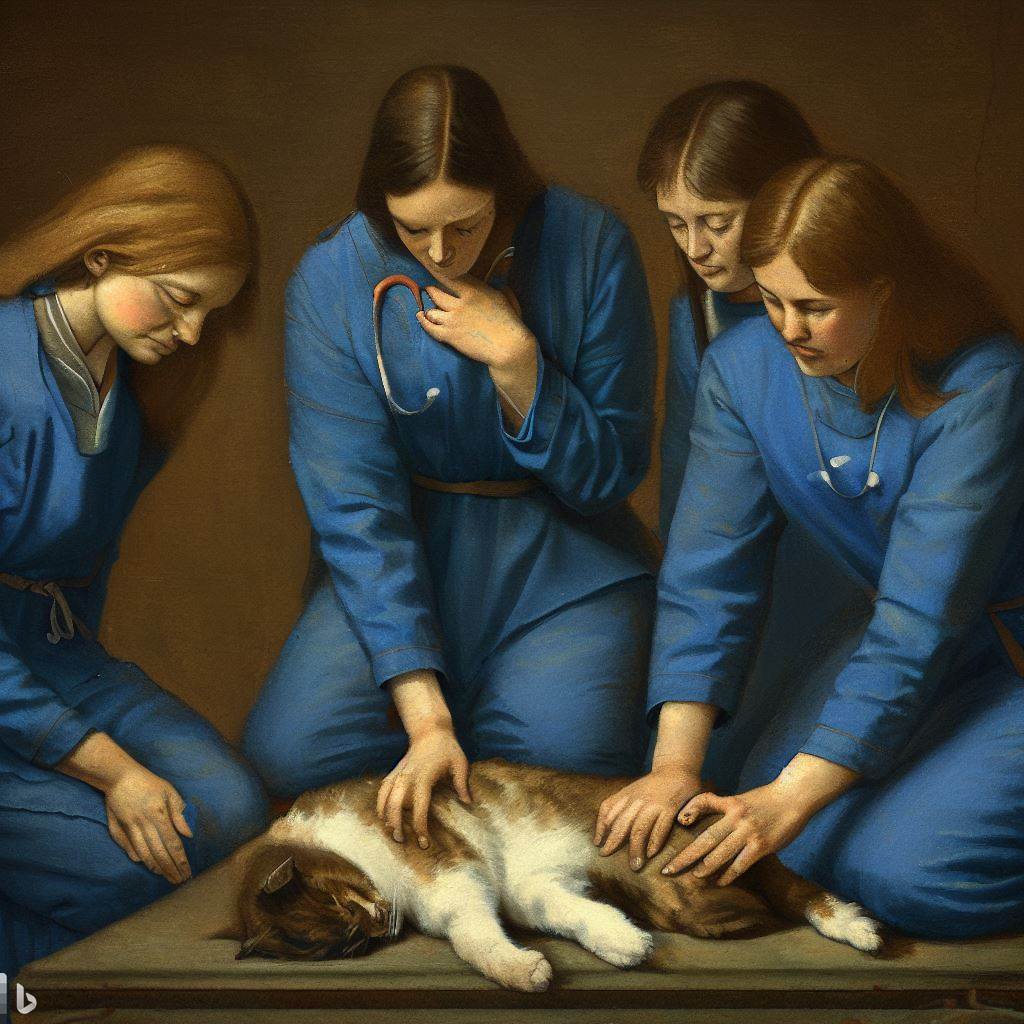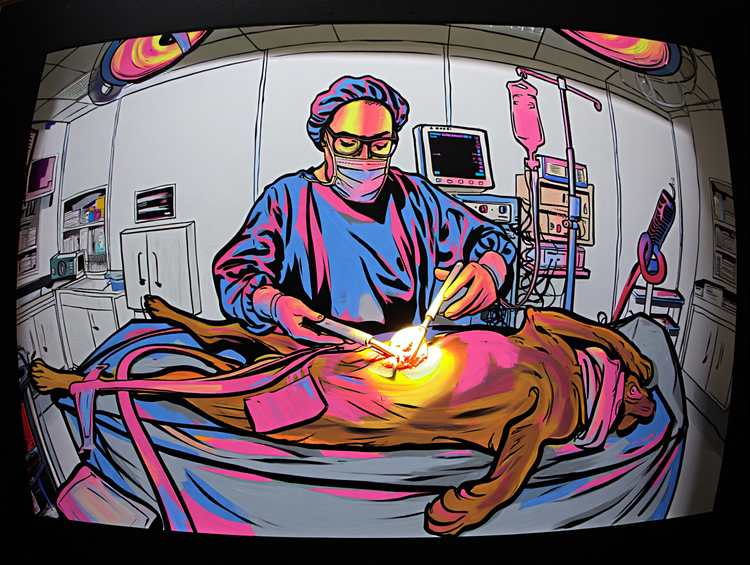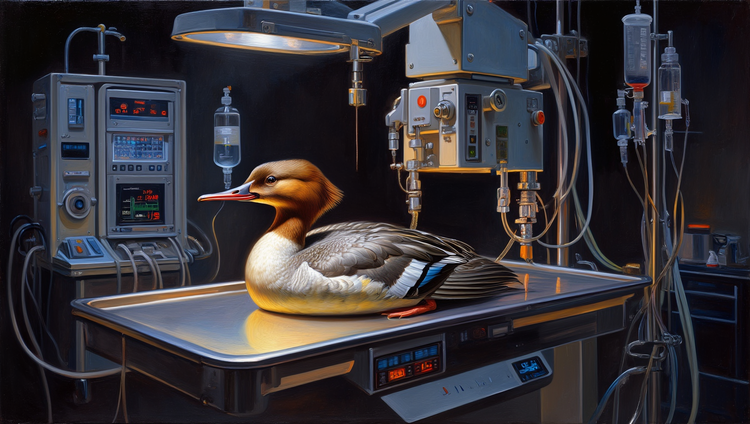CPR in GP

GP, or general practice, is a lot different from emergency medicine. For one, you often have a lot more time to do things. You can have what feels like a non-rushed conversation with a pet-owner, which is exactly what I was doing when the heretofore perfectly healthy seven-year-old cat in front of both of us suddenly keeled over and died.
First it made a horrible yowl, which I recognized as the sound that dying cats make, because I do spend a fair amount of time in emergency practice. Moments before, I had been in the middle of discussing dental health and the (ironically) relatively low risk of anesthesia for healthy cats. Then it plopped over on its side and started taking agonal breaths. This, even to the untrained eye, is a sign that something seriously wrong is happening, and so I immediately took the cat to the treatment room and started CPR.*
Almost everyone who works in emergency is aware of two things: (1) there is a “proper” way to do CPR, and (2) most of the time it’s not successful (i.e. even if you get the heart going again, the pet never leaves the hospital alive). Those of us in GP recognize that cardiopulmonary arrests are extremely uncommon events during day practice. What most members of the public know is that they’ve probably never seen an acute death and have a completely disproportionate, Hollywood-influenced expectation of how likely it is to be successful.
This particular case was complicated by the two facts that relatively few people in GP have done CPR in recent memory, and (having rushed the cat to the treatment room immediately) I didn’t close the door on my way out of the exam room, which left the client and her 12-year-old daughter to watch the initially awkward attempts to resuscitate their poor pet.
The details of the attempt aren’t necessarily all that important. Chest compressions (if done well) are the most important and not that hard to do. Endotracheal intubation and IV access are the next most, and considerably harder in a dead or dying animal without practice. It wasn’t textbook, but we got it all done. Ultimately though, after about 10 minutes without success, I called it. I had gone in quickly during the process to explain to the client what was happening. Heartbreakingly, and understandably, the young girl was experiencing extreme anxiety and needed to leave the room. Her mother showed true maternal fortitude and was able to both hear my explanation and comfort her daughter.
Her husband came down a few minutes later, and after things were quiet in the treatment room I was able to go back in. I tried to explain my best guess, that their cat had occult heart disease and had dislodged a massive clot. Realistically, I don’t think anything we could have done in that moment would’ve brought it back, but I felt a great compulsion to reframe this terrible incident for them right away. To tell them that this was an accident, out of their hands, and the best possible chance their cat had was to already be in a veterinary clinic when it happened. I may be realistic enough to know that this wasn’t likely to change the outcome, but it felt like a more humane story to tell.
Somehow, this was an extraordinary experience for me in some ways, but not others. On average, I probably see a patient arrest once or twice a week in an emergency facility. Everyone jumps into action automatically (they’re all RECOVER certified). In GP on the other hand, I’ve probably seen two or three arrests in 10 years. And I’ve absolutely never seen (or heard about) one in a patient that I had literally just said was healthy. To go from that pronouncement to the pronouncement of death within a few minutes was an extraordinarily challenging thing. Not only the little girl, but also for technicians at that practice, all of whom chose to be in this profession out of a sincere love for animals.
They all jumped in to help, although with less auto-pilot training than emergency room technicians. I know it was painful for them (the tears gave it away), but I tried to frame it in the same way: this patient experienced a calamity that was out of our hands, but in a place with the right equipment to at least give it a chance. Honestly, I’m not sure it would have changed the outcome had this cat arrested at a VECCS Level 1 facility. But given the distressing nature of the episode to everyone in this otherwise relatively tranquil clinic, it’s important to know they did their best when this moment of nature’s cruelty peaked in for a brief second
*Technically, it’s more proper to call it CPCR (cardiopulmonary cerebral resuscitation)





Comments ()